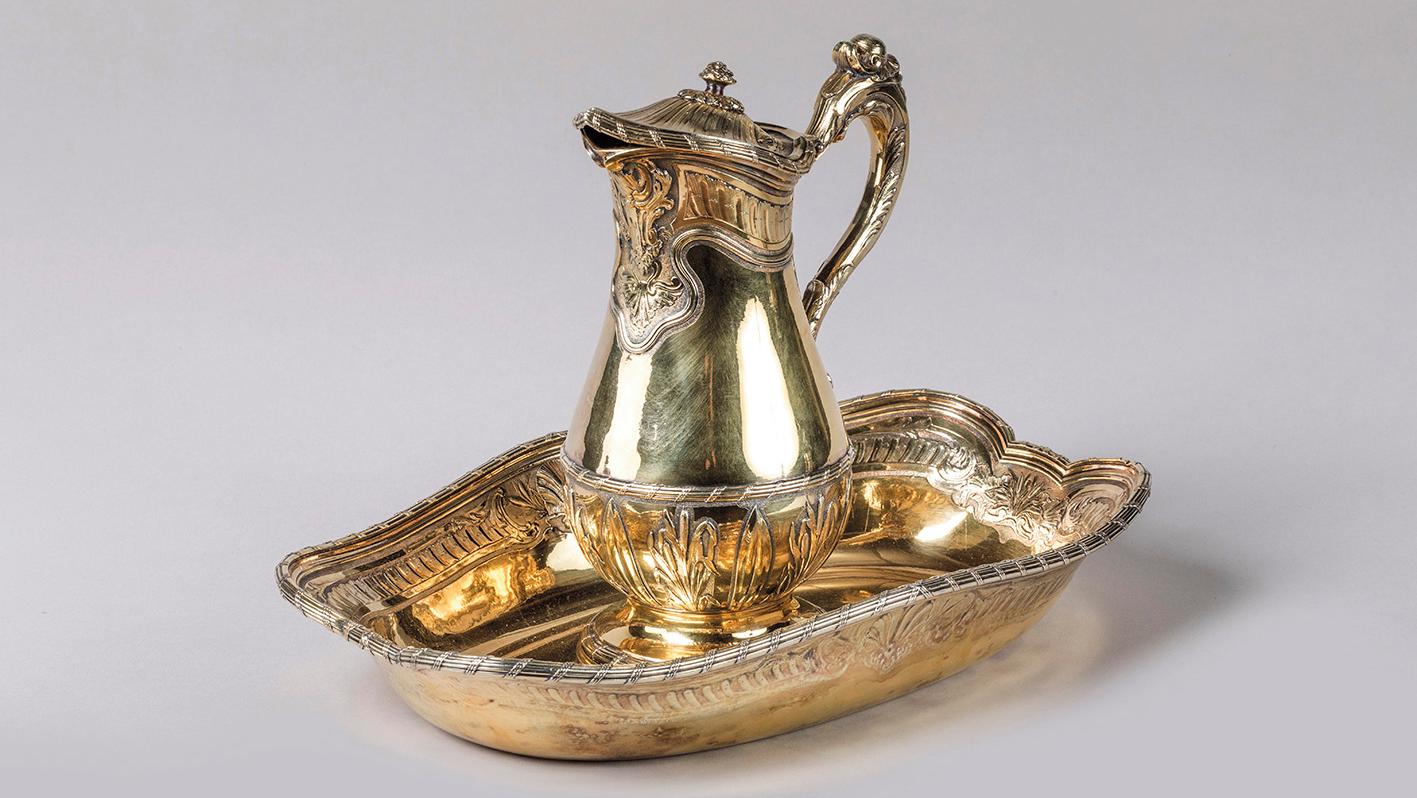While all that glitters is not gold, vermeil is probably the material that creates the most convincing illusion. Now inseparable from decorative tableware, silver-gilt was also one of the most precious materials used in religious and secular gold-and silverwork.
Paris, 1742, ewer and basin in silver-gilt by Gilles-Claude Gouel (admitted as master in Paris in 1727), l. basin 34 cm (13.3 in), h. ewer 23 cm (9 in).
October 5, 2020. Rouillac auction house. Montbazon (France).
Result: €26,040
In the Middle Ages, a bright, orangey vermilion pigment gave the name "vermeil" to silverwork largely made of gilt copper, a glowing metal with red highlights evoking the explorations of medieval alchemy. In the 14 th century, observing that metal heated to a high degree took on an incandescent vermilion shade, alchemists believed that it concealed the Philosopher's Stone within it. It took until the 17 th century when this discouraging quest had yielded no results, for the term 'vermeil tox' be used exclusively for silver-gilt. Known since antiquity, the techniques used for this type of goldsmith work were beating and a mercury amalgam, criticized by goldsmiths from the Renaissance onwards as a dangerous chemistry practice. It was obtained by mixing powdered gold with mercury in a crucible and heating it to 200°C (392°F). The goldsmith removed…
com.dsi.gazette.Article : 18708
This article is for subscribers only
You still have 85% left to read.
